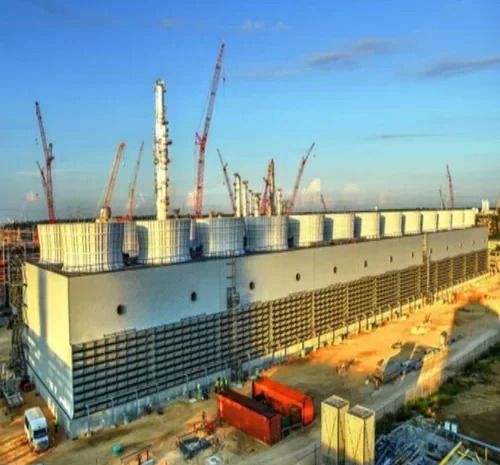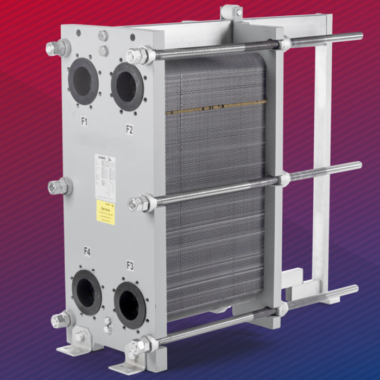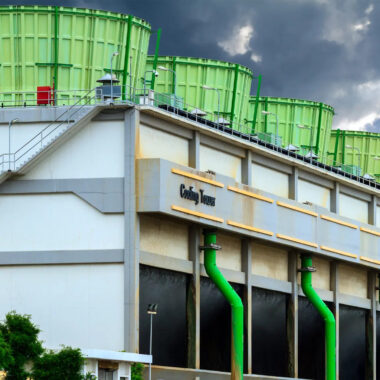Retrofitting Cooling Towers: Benefits and Key Considerations
Introduction
Retrofitting Cooling Towers offers a practical solution for industries looking to enhance the performance of their existing cooling systems without replacing them entirely. As cooling demands grow and energy efficiency becomes a critical focus, retrofitting allows for significant improvements in operational efficiency, water conservation, and compliance with evolving environmental standards. By upgrading key components and integrating modern technologies, businesses can extend the lifespan of their cooling towers while reducing costs and improving sustainability.
Benefits of Retrofitting Cooling Towers
- Improved Energy Efficiency Retrofitting cooling towers can significantly reduce energy consumption by incorporating energy-efficient components like variable-speed fans, advanced motor technology, or optimized heat transfer surfaces. This results in lower operational costs and contributes to sustainability efforts.
- Extended Equipment Lifespan Upgrading key components such as fans, drift eliminators, and water distribution systems helps extend the lifespan of an existing cooling tower. By improving functionality and performance, retrofitting delays the need for a full system replacement.
- Reduced Water Consumption Modernizing a cooling tower with advanced water management technologies, such as improved fill media and drift eliminators, helps reduce water usage. This is particularly beneficial in regions with water scarcity, where minimizing water loss is essential.
- Compliance with Environmental Regulations Retrofitting allows industries to meet stricter environmental regulations, especially those related to water treatment, chemical use, and energy consumption. It helps reduce the environmental footprint of industrial cooling systems while ensuring regulatory compliance.
- Enhanced Performance and Cooling Capacity Retrofitting can boost the cooling capacity of an existing system, ensuring it can handle higher heat loads without overtaxing the equipment. This is especially important for industries experiencing growth or increased cooling demands.
- Lower Maintenance Costs Upgraded components are often more reliable and require less maintenance than older parts. By retrofitting, industries can reduce the frequency and cost of repairs, while also minimizing system downtime.
- Improved Safety and Reliability Modernizing older systems with newer technologies enhances the safety and reliability of cooling towers. Upgrades such as anti-corrosion coatings, more efficient fans, or improved water distribution reduce operational risks and improve overall performance.
Considerations for Retrofitting Cooling Towers
- Assessment of Current System A thorough evaluation of the existing cooling tower’s performance, energy consumption, and structural integrity is essential before retrofitting. This helps identify the specific areas that require upgrades and the expected benefits.
- Cost vs. Benefit Analysis Industries should weigh the cost of retrofitting against the benefits, such as energy savings, improved performance, and regulatory compliance. In many cases, retrofitting offers a quicker return on investment (ROI) compared to replacing the entire system.
- Selection of Retrofit Components Choosing the right retrofit components is crucial for maximizing the benefits. Components like high-efficiency fans, fill media, and drift eliminators should be selected based on the cooling tower’s design and operational requirements.
- Impact on Downtime Retrofitting requires a temporary shutdown of the cooling tower, so planning for minimal disruption is essential. Industries should schedule retrofits during planned downtime or low-demand periods to avoid impacting production.
- Compatibility with Existing Systems It’s important to ensure that the new components are compatible with the existing cooling tower structure and systems. Consulting with manufacturers or experts can help avoid potential integration issues.
- Future-Proofing When retrofitting, industries should consider future scalability and technological advancements. Upgrades that allow for easier future enhancements or adaptations to changing environmental regulations can add long-term value.
- Environmental Impact Retrofitting offers an opportunity to reduce the environmental footprint of cooling towers by incorporating eco-friendly technologies. The selection of water-saving components and energy-efficient motors can contribute to sustainability goals.
Conclusion
Retrofitting cooling towers is a practical and cost-effective way to enhance system efficiency, reduce operational costs, and extend the lifespan of existing equipment. It offers industries the flexibility to modernize their cooling operations without a complete system overhaul. By considering factors such as system assessment, component selection, and environmental impact, industries can ensure a successful retrofit that provides long-term benefits in performance and sustainability.






